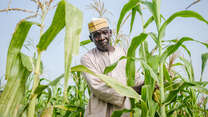Since Russia’s full-scale invasion in February 2022, the war in Ukraine has been in the spotlight, largely due to its dire human toll and geopolitical implications. To date, the environmental and climate impacts of the war have received limited attention, particularly in relation to humanitarian needs. In just the first 12 months, the war triggered an estimated net increase of 120 million tonnes of greenhouse gases and caused environmental damage exceeding USD 57 billion (The New Humanitarian, 2024). Two years on, this figure reached 175 million tonnes—surpassing the annual emissions of highly industrialized countries like the Netherlands (Ecoaction, 2024). Furthermore, this amount equals the cumulative carbon emissions of five countries classified as Fragile and Conflict-Affected States (FCAS) on the International Rescue Committee’s (IRC) Emergency Watchlist: Haiti, Syria, Burkina Faso, Yemen, and Somalia (EDGAR, 2023). The extent to which the war in Ukraine exacerbates the vulnerability of the conflict-affected population to environmental and climatic changes is still not fully understood, creating a gap that hinders timely, climate-security risk-informed humanitarian, and post-conflict responses.
This report has been commissioned by IRC and produced by adelphi under Weathering Risk, a multilateral initiative that offers tailored analysis and tools to understand climate-related risks to human security and build sustainable peace.
Report



